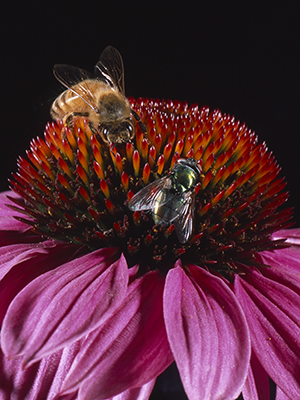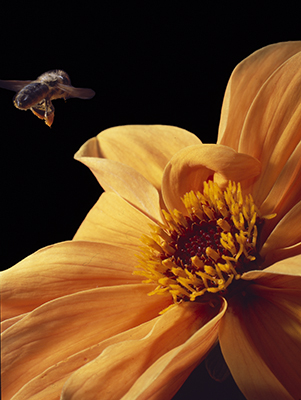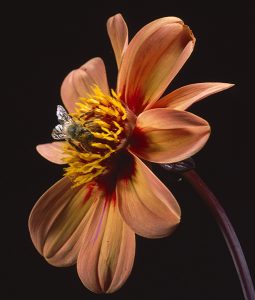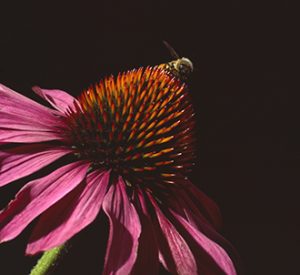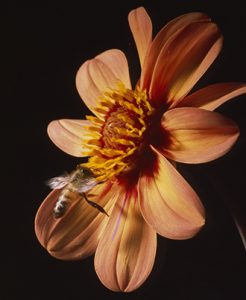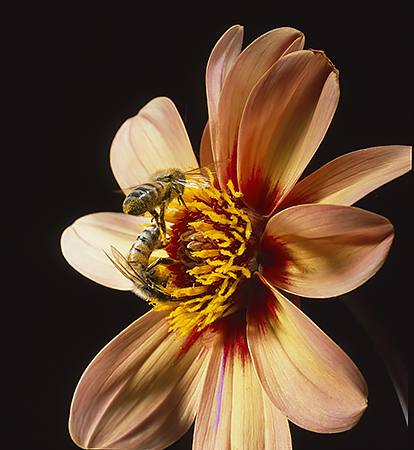
F32 and BEES There #2
Yes, I know these images are starting to seem repetitive but I took ’em, and you’re gonna look at em’! Hopefully by the next time I see a folio I’ll have new flowers and some different looks.
Boris in one of his comments on Folio A asked for more detail on the Macrobox, which is given here:
The Macrobox is based on a contraption I purchased years ago from John Hart of Colorado. It was designed to hold 2 cameras at 90 degrees to each other, and both cameras were aimed at a 50/50 mirror (aka a beamsplitter) which is at a 45 degree angle. One camera shoots THROUGH the mirror, while the other shoots at the reflection.
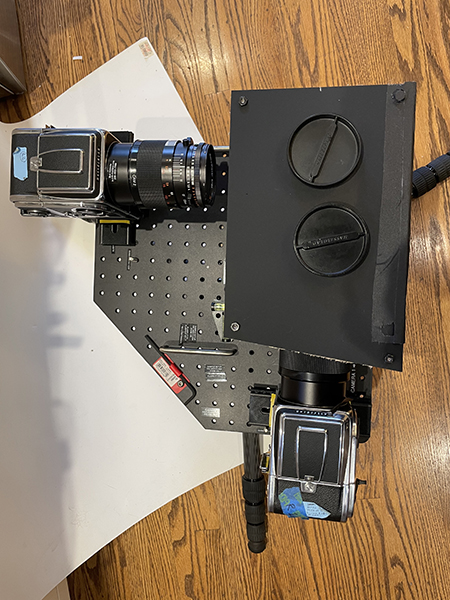
Overhead view of the Macrobox
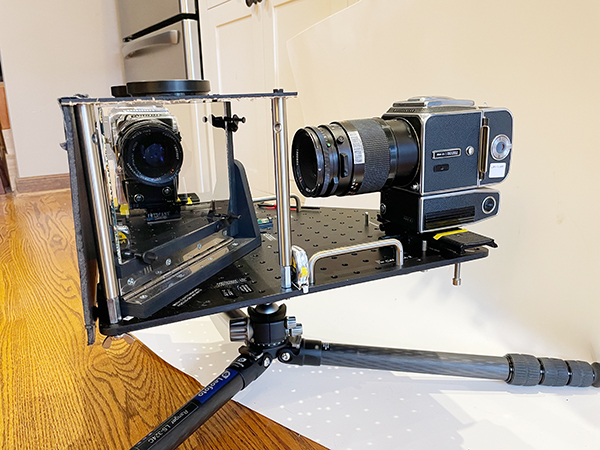
Side view of the Macrobox
The original box needed to be modified to accommodate the motor-driven Hasselblads, which are taller. I shoot with the 120mm Makro lens, and up to 2 extensions of 56mm each. Most of the bee shots are shot with 1 extension. The cat shots are with no extensions. My target stereobase for the cats is 1.6cm and for the bees is 8mm.
In the sideview picture you can see the beamsplitter on the left side of the rig. If you look carefully at the mirror, you can see both cameras.
The cameras are individually mounted on sliders so they can be slid into position. Additionally, the Macrobox is normally mounted on a heavy-duty Velbon macro slider, to help with making fine adjustments to the positioning.
